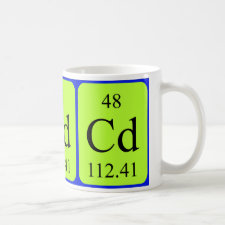
Authors: Fan HT, Li J, Li ZC, Sun T
Article Title: An ion-imprinted amino-functionalized silica gel sorbent prepared by hydrothermal assisted surface imprinting technique for selective removal of cadmium (II) from aqueous solution.
Publication date: 2012
Journal: Applied Surface Science
Volume: 258
Issue: (8)
Page numbers: 3815-3822.
DOI: 10.1016/j.apsusc.2011.12.035
Alternative URL: http://www.sciencedirect.com/science/article/pii/S016943321101926X
Abstract: A new ion-imprinted amino-functionalized silica gel sorbent was synthesized by the hydrothermal-assisted surface imprinting technique using Cd2+ as the template, 3-[2-(2-aminoethylamino)ethylamino]propyl-trimethoxysilane (AAAPTS) as the functional monomer, and epichlorohydrin as the cross-linking agent (IIP-AAAPTS/SiO2) for the selective removal of Cd2+ from aqueous solution, and was characterized by FTIR, SEM, nitrogen adsorption and the static adsorption-desorption experiment method. The specific surface area of the IIP-AAAPTS/SiO2 sorbents was found to be 149 m2 g-1. The results showed that the maximum static adsorption capacities of IIP-AAAPTS/SiO2 sorbents by hydrothermal heating method and by the conventional heating method were 57.4 and 31.6 mg g-1, respectively. The IIP-AAAPTS/SiO2 sorbents offered a fast kinetics for the adsorption and desorption of Cd(II). The relative selectivity coefficients of IIP-AAAPTS/SiO2 sorbents for Cd2+/Co2+, Cd2+/Ni2+, Cd2+/Zn2+, Cd2+/Pb2+ and Cd2+/Cu2+ were 30.68, 14.02, 3.00, 3.12 and 6.17, respectively. IIP-AAAPTS/SiO2 sorbents had a substantial binding capacity in the range of pH 4-8 and could be used repeatedly. Equilibrium data fitted perfectly with Langmuir isotherm model compared to Freundlich isotherm model. Kinetic studies indicated that adsorption followed a pseudo-second-order model. Negative values of Δ G° indicated spontaneous adsorption and the degree of spontaneity of the reaction increased with increasing temperature. Δ H° of 26.13 kJ mol-1 due to the adsorption of Cd2+ on the IIP-AAAPTS/SiO2 sorbents indicated that the adsorption was endothermic in the experimental temperature range
Template and target information: cadmium ion, Cd(II)
Author keywords: cadmium, 3-[2-(2-Aminoethylamino)ethylamino]propyl-trimethoxysilane, Hydrothermal-assisted, Ion imprinted



Join the Society for Molecular Imprinting

New items RSS feed
Sign-up for e-mail updates:
Choose between receiving an occasional newsletter or more frequent e-mail alerts.
Click here to go to the sign-up page.
Is your name elemental or peptidic? Enter your name and find out by clicking either of the buttons below!
Other products you may like:
 MIPdatabase
MIPdatabase









